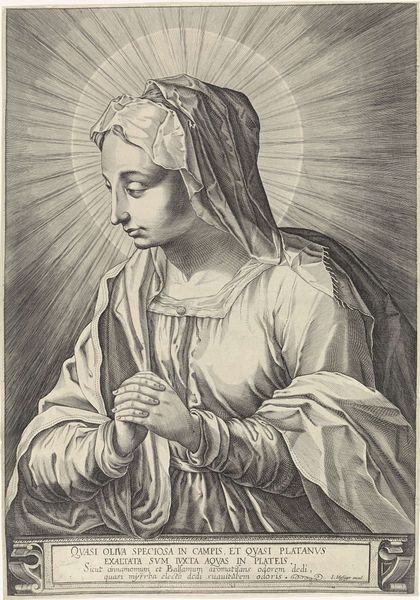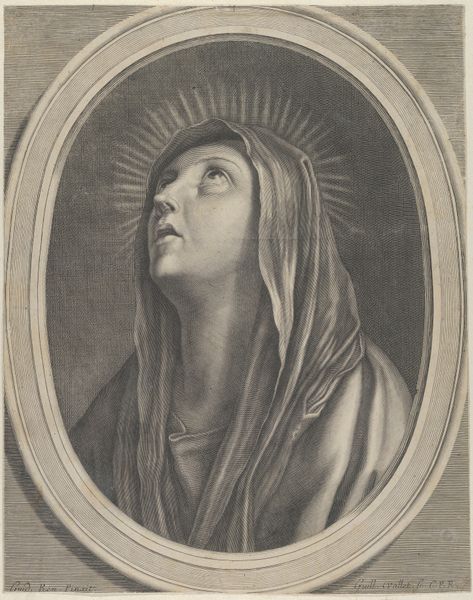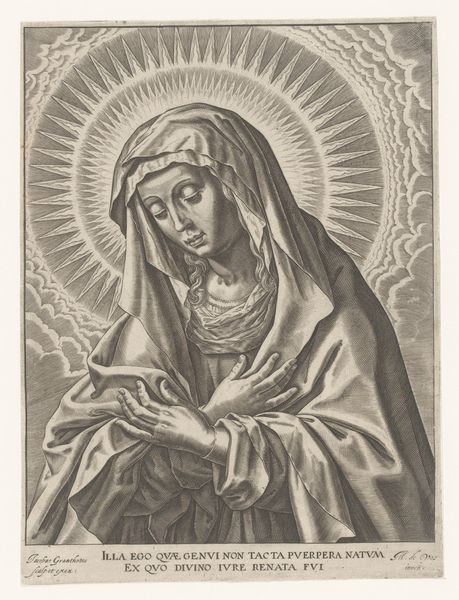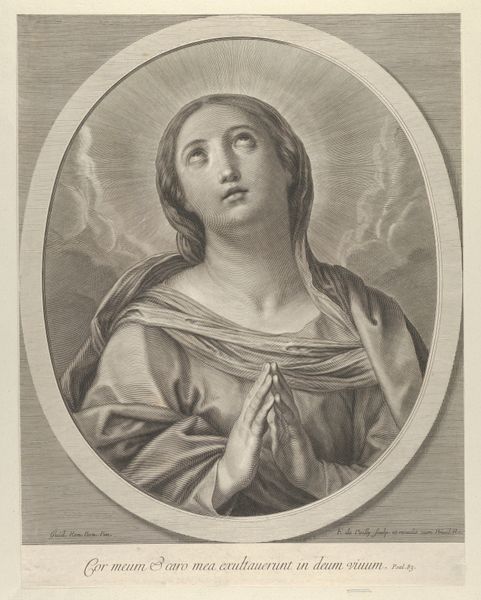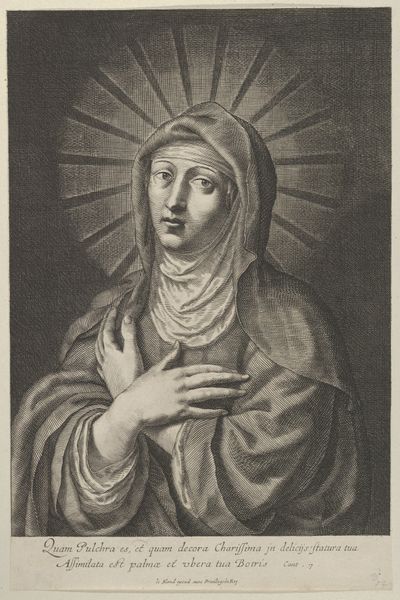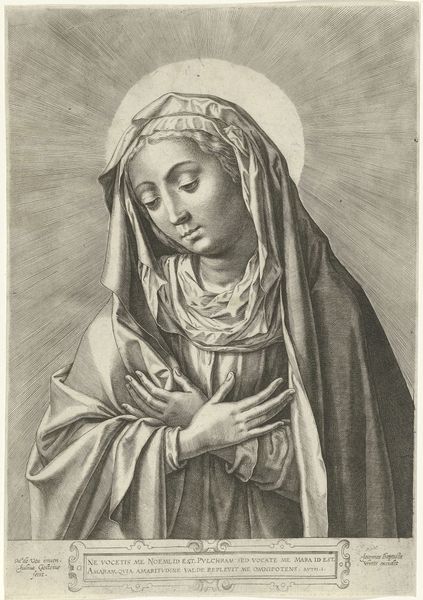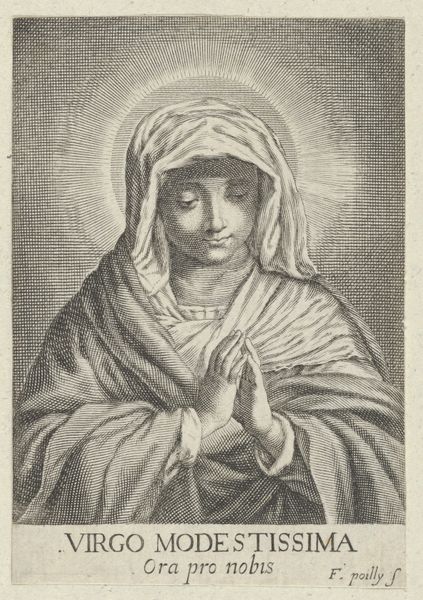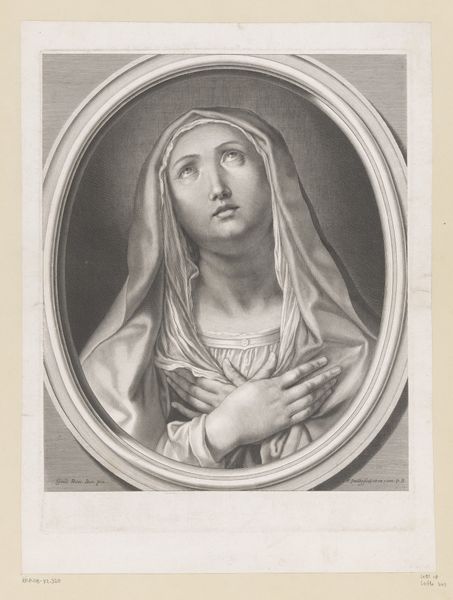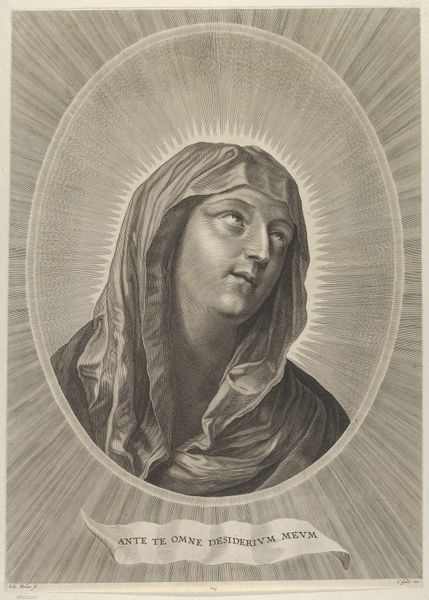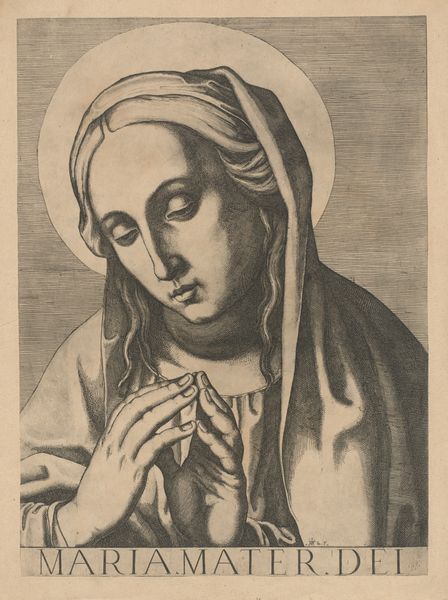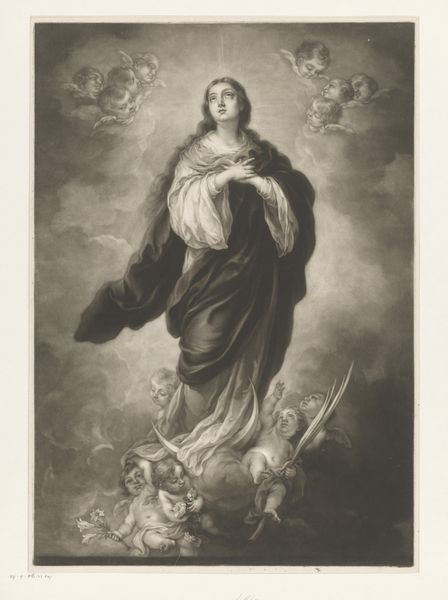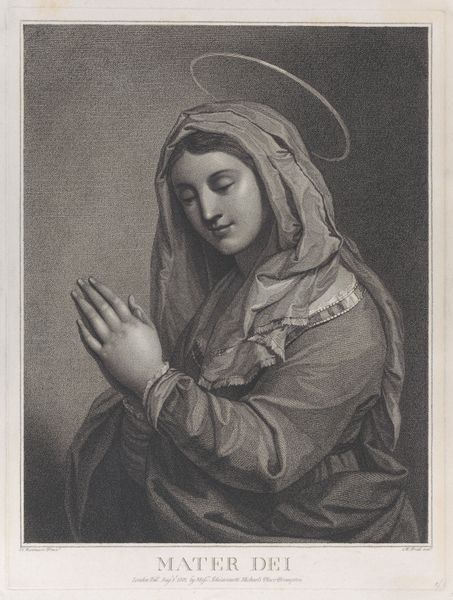
The Virgin with arms crossed over her chest, looking up to the left, in an oval frame, after Reni 1640 - 1645
0:00
0:00
drawing, print, engraving
#
portrait
#
drawing
#
baroque
# print
#
the-seven-and-five-society
#
history-painting
#
engraving
#
portrait art
#
virgin-mary
Dimensions: Sheet (Trimmed): 15 13/16 × 11 1/4 in. (40.2 × 28.6 cm)
Copyright: Public Domain
Gilles Rousselet created this engraving, "The Virgin with arms crossed," sometime in the 17th century, based on a painting by Guido Reni. Engraving is an intaglio process. The artist carves lines into a metal plate – usually copper – with a tool called a burin. This requires immense skill. The depth and width of the lines determine how much ink they hold, and therefore, how dark they appear when printed. Look closely, and you can see how Rousselet varied the marks to model the Virgin's face and clothing. The resulting print could be reproduced many times, spreading Reni's original composition far and wide. This reproductive capacity was vital for disseminating artistic ideas in the early modern period, effectively creating a visual economy. Rousselet and others like him were essential cogs in that machine, bringing art to a much broader public than ever before. They deserve recognition for their contribution to the art world.
Comments
No comments
Be the first to comment and join the conversation on the ultimate creative platform.
